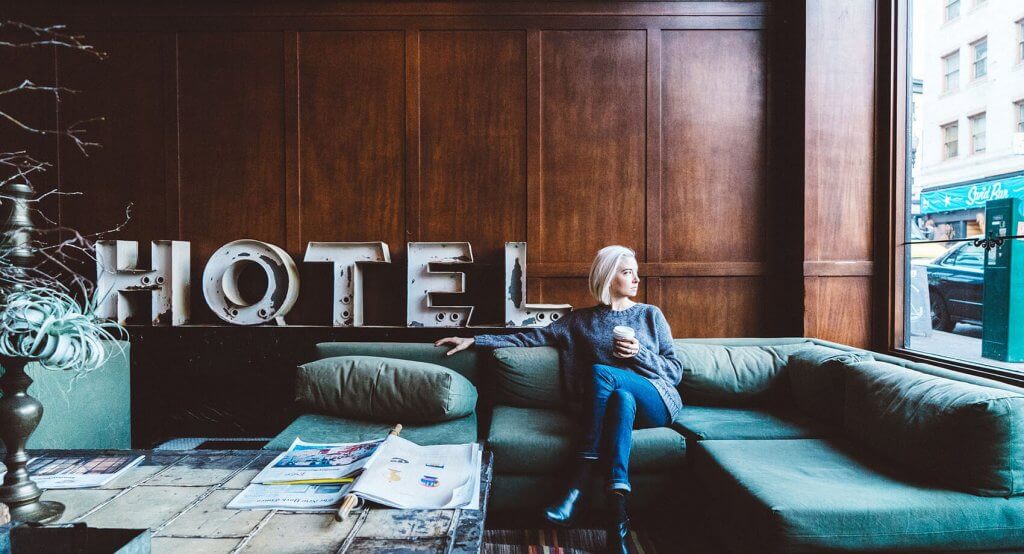
The perennial shift towards a digital economy demands agility from businesses and consumers alike; and the hospitality industry is on the same path when it comes to digitalisation being incorporated as an industry standard.
NB: This is an article from GuestRevu
Although the fundamentals of hospitality remain, a lot of solutions have sprouted to help hoteliers survive the future of travel. We’ve gathered 10 of what we think are strong trends emerging in different parts of hospitality – trends that we predict will last a long time to come. Have a look at where things are going, and maybe try a few avenues out this year!
Subscribe to our weekly newsletter and stay up to date
1. The rise of the experience economy
Pauses in domestic and international travel prompted people to reflect on their travel behaviour, and value exceptional experiences over possessions. The looming threat that at any point, it may be the last time one visits a destination for a while (because of lockdowns, red lists and pandemic precautions), means that guests crave more fulfilling travel experiences – beyond a beautiful bedroom view and well presented meals.
This creates a higher demand for cultural activities that will enhance guests’ journeys, and hoteliers need to start seeing themselves as experience businesses to meet this rising demand halfway.
Hoteliers are challenged to relook their offers, work with neighbours, competitors and other experience providers, and continue to add value by making the guest journey more emotionally fulfilling, and less materialistic. This gives rise to technological solutions like Travel Curious, that integrate hotel websites with widgets that display virtual tours, guided trips and activities in the vicinity a guest chooses to stay at. That’s where the market is going, and hoteliers need to adjust to how the experience economy is shifting, so they can keep up.
2. Slow travel continues to accelerate
Part of the need to slow down and experience more has brought the coming of age for slow travel – a movement where guests are shifting from their regular jam-packed mainstream travel itineraries, and replacing them with a lot of “we’ll see when we get there” in between.
Think of this trend as a more mainstream and grown up version of backpacking. It needs a conscious involvement from hoteliers to contribute stripped-down experiences that offer guests options away from what they’re awakening to find as unsustainable tourist behaviour, while giving guests opportunities to be more integral parts of the community they locate themselves in, for longer periods of time, and sustainably too.
Not only is this movement aimed towards protecting the environment by decreasing a hectic amount of air travel and busy roads from group tours, it saves money for guests by showing them the hidden gems that are a short walk away, where they can put more money into the local economy too while experiencing enriching travels, and establish new connections; while hopefully gravitating towards extended stays.
This helps hoteliers diversify their offering, and allows them a bit more flexibility to anticipate guest volumes and rotate duties – as there’s fewer guests cooped up indoors, and a lighter load for (probably minimal) staff around the property to keep things running smoothly. This goes to show that sustainability is a two-way street, with many benefits.
3. Travel TikTok is in full flight
Social media has all the potential to bring communities together, and as a result led billions of people with a wanderlust to the travel content on Tiktok; to look at where other travellers go and what they get up to. This helps them make their pick of where they’ll go next on their real-life travel bucket lists.
If you were to engage your future guests with some attractive content under the hashtag #tiktoktravel on the platform, that potentially puts you in front of an audience of 26.1 billion viewers (which are not all millennials, believe it or not) – many of whom can turn out to be referrals or your guests in the future, if your content is relevant.
The platform can be used as a tool for organic engagement and community building with content that lands on users’ “for you” page, and by encouraging guests that are familiar with the app, to create content that involves your property and the destination as a whole.
Depending on how the algorithm pans out for a user (according to the content they consume), you can spread your content’s reach and involve your property’s different departments for maximum exposure; like having your food and beverage department join #restock, or housekeeping teams making content to post under #cleantok. These all have potential to reach billions of people (both travellers and hoteliers) with the right execution of content creation.
Your content can also take on the form of in-feed ads, brand takeovers, and paid campaigns that you have the option of, if you want to take the tactical route. The first step is obviously to sit back, and observe which content does well on the platform, which challenges you can join or reimagine, and who you can collaborate with if possible. Hotel marketers don’t always need to be too strategic with what they produce, and especially with social media – sometimes you just need to blend in before you can stand out.




